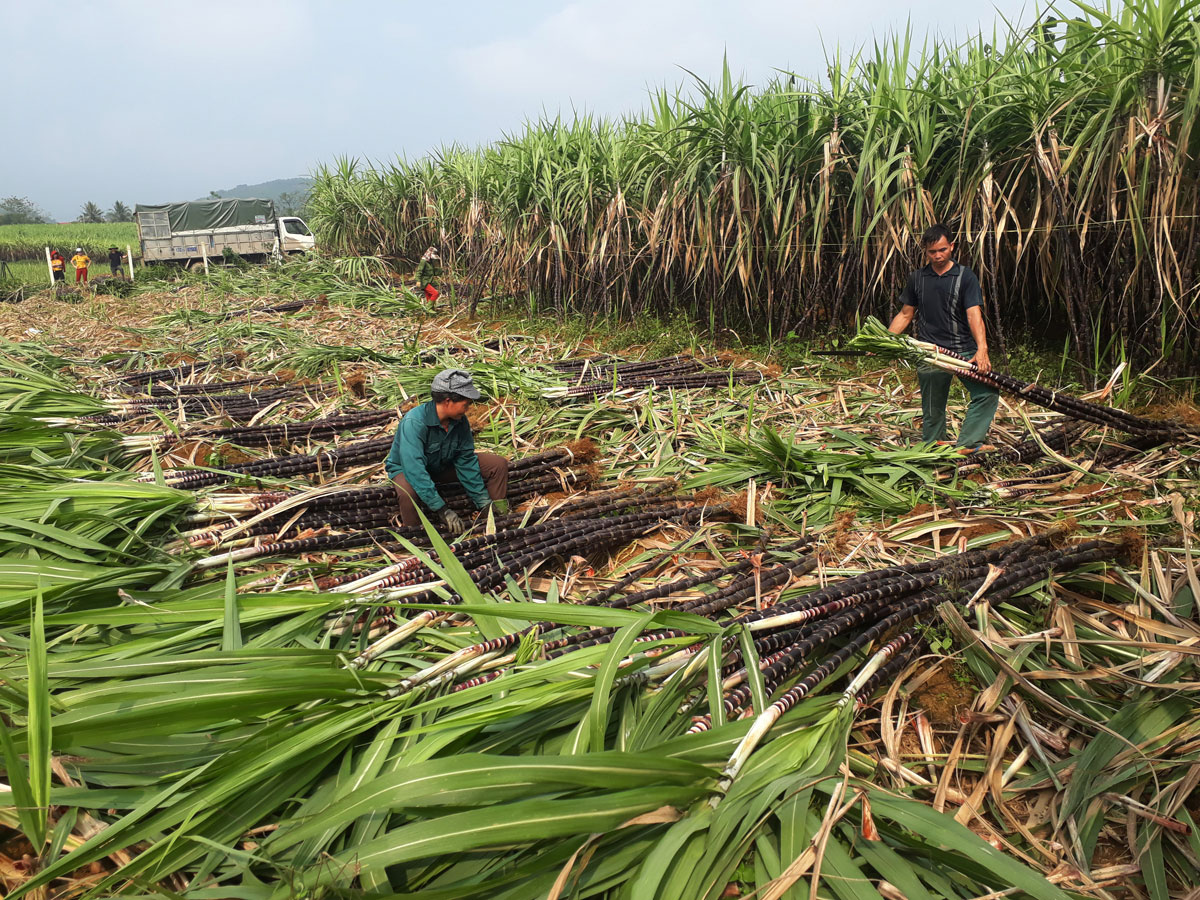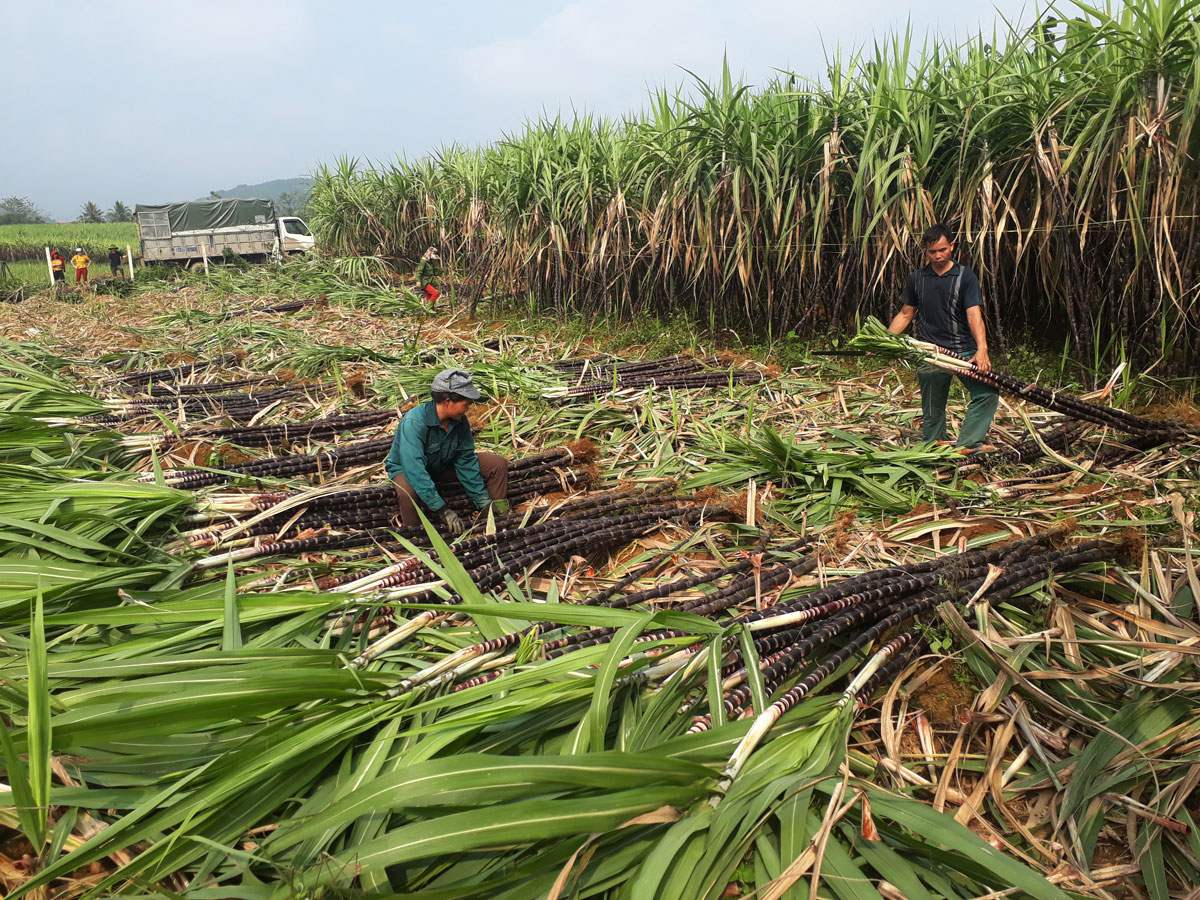
(HBO) – Purple sugarcane, attaching to the life of Muong ethnic minority since ancient time, is not only a crop of high economic value, but also an indispensable item in key events of the community, especially the Lunar New Year festival (Tet) and wedding ceremony.
When being children, we were often tasked with
going to the edge of the forest to cut fresh reeds to erect a neu pole and then
to fields to chop down a couple of sugarcane plants as decorations for Tet. We
kept fulfilling our tasks for the 27th day of the passing Lunar year’s last
month without ever wondering what is the meaning of the sugarcane. Years went
by; we grew up and learnt that the plants are also an integral part of any
wedding ceremonies in our community.
Once I posted a photo capturing a wedding
ceremony of a Muong couple. Under the post, a friend of mine from the
university raised a question that why the groom's family has to carry sugarcane
with them when going to the bride’s home.
The question prompted me to find an answer. I
asked many people from different ages; most of them told me it is the custom.
Feeling unsatisfied, I came to meet Bui Van Nhon, a manliving in Tan Lac
district’s Gia Mo commune who is dedicated to learning about the Muong ethnic
minority. Nhon shared my curiosity about the sugarcane and had spent time
collecting related materials and studying the custom. He said the plants’
presence on Tet or at wedding ceremonies is originated from a legend about the
Coi sisters.
Legend has it that once upon a time, there was a
giant mosquito in the land of Muong people, which annually fed on selected
locals. Then it was the Coi sisters’ turn to be the feed. The sisters loved
each other so much, and both were willing to give up their lives for the other
to survive. Unable to decide who would go, they went to the mosquito’s cave
together so that the mosquito could choose to eat the one it wanted. Waiting
for predator in front of its home during the freezing 12th month of the lunar
year, they cut wild sugarcane and collected bagasse from other victims to make
a fire for warmth. Unexpectedly, the smoke from their fire killed the monster.
Muong people appreciated what they did and the sugarcane has since become a
symbol of the sisters’ love and held a significant role in their life.
Of the same opinion is Bui Huy Vong, an artisan
of folk art. According to Vong, sugarcane is cultivated with its stalks, which
sprout when being placed on the ground. With such strong reproduction feature,
the plant becomes a symbol of fertility and growth, which match the expectation
of Muong people for a new year. Since ancient time, the community has brought
home a couple of sugarcanes on Tet. The selected ones, with their roots and
leaves left intact, must be long, strait, and beautifully coloured, and free
from pests and diseases.
Meanwhile, at a wedding ceremony, a carefully
selected couple of sugarcane must be carried by young male relatives of the
groom. The plants represent an aspiration for a sweet marriage life ahead,
while their carriers a hope for their first child to be a son.
In a word, all explanations show Muong people’s
yearning for warmth, sweetness, growth, and the elimination of evils and bad
things.
As the Year of the Buffalo approaches, we are
now living our childhood memories with the tasks of bringing sugarcane home and
watching for boiling pots of Banh Chung (square glutinous rice cake)./.
The clothing of women reflects the culture of the Muong, Thai, Tay, Dao, and Mong ethnic groups in the northern province of Hoa Binh.
Gongs hold a special place in the cultural and spiritual life of the Muong ethnic people in Hoa Binh province. More than musical instruments, they are an indispensable part of community rituals and collective memory, echoing through generations as a spiritual thread linking the past, present, and future.
Preserving and promoting the cultural values of the Muong ethnic group has become an urgent task in the current context, as many traditional values face the risk of fading away. This effort requires not only protecting the cultural identity but also eliminating outdated customs and developing a modern cultural lifestyle, contributing to sustainable values for the Muong community in Hoa Binh province.
The Muong ethnic culture, deeply rooted in Vietnam’s mountainous north, continues to be preserved and revitalised by dedicated individuals and communities determined to safeguard their ancestral identity.
The Muong group is one of the largest ethnic minorities in Vietnam, primarily found in Hoa Binh province. The Muong people in Hoa Binh boast a rich and diverse cultural treasure that reflects the unique identity of this ethnic group. Accounting for over 63% of the province's population, they have created and preserved numerous distinctive cultural values, contributing to their unique identity. Their cultural heritage is an invaluable asset, at the heart of their national identity, and represents a vibrant spiritual life that must be preserved and promoted in today’s modern world.
For generations, the ethnic communities of Hoa Binh province, particularly the Muong people, have preserved vibrant festivals deeply intertwined with the region’s geography, nature, and social traditions. These celebrations enrich Hoa Binh’s spiritual life and cultural identity, reflecting both folk beliefs and the intermingling of ethnic customs. Many of these festivals have endured the test of time, passed down through generations and continuing to thrive today. Among them, the Khai Ha (Going Down to the Field) festival stands out as one of the most significant events of the Muong ethnic group.



